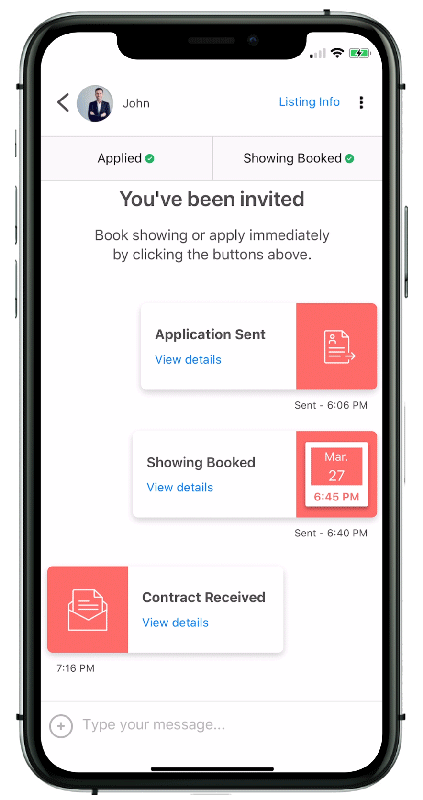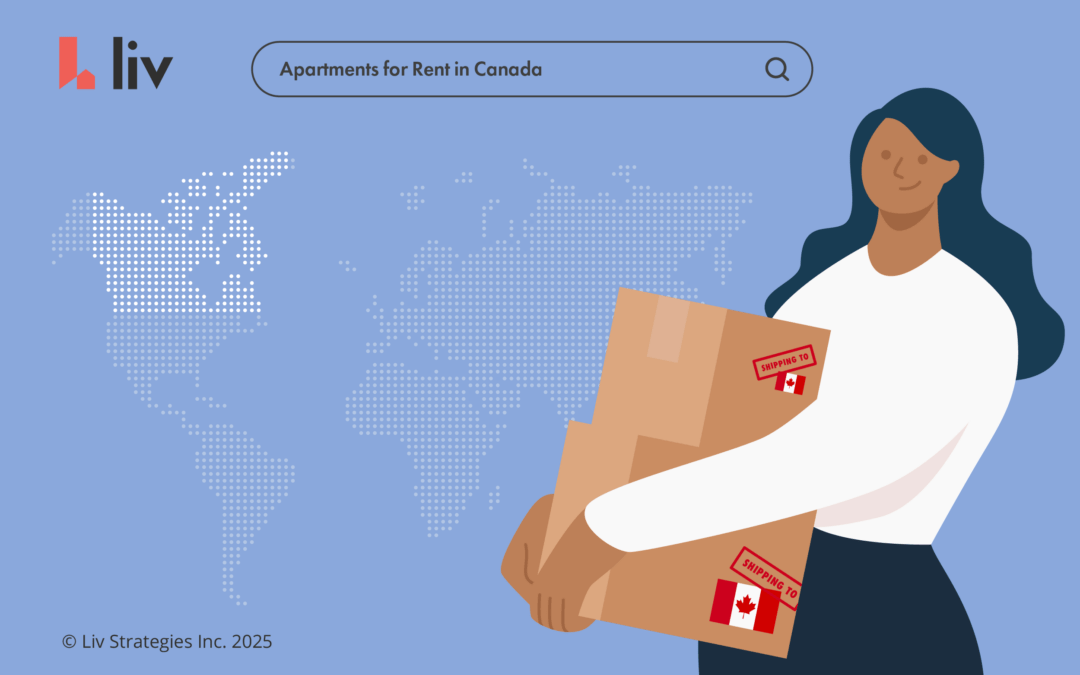Toronto, along with most other major cities in Canada, has seen its average rent prices rise astronomically over the course of the past year. Amid rising interest rates and increased demand in major rental markets across the country, renters are finding more competition than ever to secure a place to rent at an affordable rate. Combine this with the influx of rental scams sweeping the country, and renting in Toronto can seem a difficult task for even the savviest tenants. Having said this, there are still plenty of opportunities to find your perfect home, especially with the help of liv.rent – Canada’s safest rental platform. Here are ten of our top tips for how to rent in Toronto.
liv.rent – Renters Can Now Create Alerts
Don’t see what you’re looking for? Set up an alert and get notified about listings that meet your criteria (location, price, housing type, bedrooms, pet policy, and more).
Note: If you’re not a liv.rent user, sign up first. Then apply your filters and click the “Create Alert” button on the upper right hand corner to set up your alert.
1. Identify your requirements
Make a list of what is important to you before you look for an apartment to rent in Toronto – amenities, neighbourhood, walkability, transit etc. This will help refine your search.
With your identified requirements, start your search on liv.rent for apartments for rent in the Greater Toronto Area. Filter your searches by various parameters – housing type, bedrooms, pricing, pet policy and furnished or unfurnished rentals.
>> Recommended Reading: Average Rent Near Transit In Greater Toronto Area
2. Research & explore the neighbourhood
If you’re looking at renting an apartment in Toronto, it’s important to first find out the average rent for comparable properties in the area of Toronto that you’re targeting. This will give you a good idea of what you should be paying. It also arms you with the necessary information to negotiate terms and rates if necessary. In addition, scope out the neighbourhood on foot; given that you’ll be renting for at least 12 months, this will give you a better idea of the area, services and amenities.
Subscribe to liv.rent’s monthly rent reports to gain a comprehensive understanding of average rental rates across the Greater Toronto Area.
3. Research the landlord
One of our top tips for renting an apartment in Toronto is to avoid scam listings and disreputable landlords by researching your landlord beforehand. Utilize social media tools such as Facebook and LinkedIn. You can also narrow your searches to verified landlords and/or properties on the liv.rent rental platform. This means their business licenses and land title documents have been verified against city registries; thus, lending reassurance that you are dealing with a legitimate entity.
>> Recommended Reading: How to protect yourself from rental scams in Canada
4. Diversify your search
Although we certainly advise using liv.rent to find verified listings in Toronto, you may need to look elsewhere in order to find a place on a tight deadline. You can use other platforms like 4rent, Walk Score and Kijiji to broaden your search. Just be sure to be cautious of rental scams if you’re using a platform that doesn’t verify listings and landlords.
5. Have all the necessary information to apply
In order to act quickly on a property, make sure you have evidence of employment and income. Valid proof includes bank statements, pay stubs, tax statements, and letters of employment. Other alternatives include job offer letters or student loan financial statements. It is also important to have references (ideally, previous landlords).
On liv.rent, once you’ve completed your renter profile, this will serve as the only application you need to apply for multiple properties. Make sure your profile is fully completed with financial documents and references. This is an indicator of your reliability and trustworthiness as a tenant; thus, landlords will more likely favour your application over others.
6. Be strategic about in-person viewings
If possible, view video tours first. Since in-person viewings are limited due to COVID-19, narrow down your selection and book viewings for only places you’re seriously considering. Once there, be prepared with questions and make sure everything is in working order before committing – run faucets, check thermostats, flush toilets, turn on stoves, etc. And, when you do commit to an in-person showing, be sure you’re ready to act – have all the information and payment ready (see #5 – Have all necessary information).

7. Adjust search parameters
As important as it is to decide on a neighbourhood for your search, it is equally as important to be flexible. Consider properties outside your ‘sweet spot’ – a little to the north, south, east or west. Your selection will expand and you may find a better rental or get more for your money while still enjoying the attractions of your preferred neighbourhood.

8. Consider older rental buildings
As appealing as new condos might be with modern amenities, appliances and fixtures, old buildings are often renovated, more spacious and more cost-effective. Do not rule them out!
9. Be prepared to negotiate
This is a once in a lifetime opportunity – renter’s market in Toronto. You now have a bit more leverage when determining the rental rate. Try asking for a reduction, a fixed price for utilities, a rent freeze or even permission to have a pet! The ball is in the renter’s court – for now.
Download This Ultimate Renter Guide
If you’re a first time renter, this is the guide for you. From searching and viewing to choosing and applying, it’ll answer all your questions about renting in Canada.
10. Familiarize yourself with standardized lease terms

Do your research and know your rights by reviewing the Landlord and Tenant Board (LTB) rules. This way you’ll avoid agreeing to questionable or illegal lease terms. We also break down some of the crucial rental-related laws and practices on our blog for those looking to get familiar with Ontario’s rules & regulations.
FAQ: How to rent in Toronto
How to get cheap rent in Toronto?
Some easy ways to start saving on rent in Toronto include downsizing, sharing a rental unit with roommates, expanding your search to less expensive areas of the city, or negotiating with landlords to secure cheaper rent.
You can find more tips for saving on rent in Toronto in an article here.
Where is the best place to rent in Toronto?
The best place to rent in Toronto can vary from person to person depending on what your priorities are and whether you’re working or studying in a specific part of the city.
If you’re renting on a budget, you can get a sense of some of the cheapest neighbourhoods to rent in here.
Why is Toronto so expensive to rent?
Toronto is consistently one of the most expensive cities in Canada to rent in, primarily due to the high demand for rental housing due to the many schools, offices, and other opportunities that the city holds. Since vacancy rates generally remain low in the GTA, renters often face tough competition for housing which in turn drives up the price of units.
Which area is the cheapest to rent in Toronto?
At the time of writing, the cheapest places to rent in the Greater Toronto Area are Oshawa and Brampton, though this is always subject to change based on a number of factors.
You can stay up to date on the cheapest places to rent in Toronto with this resource.
Is it cheaper to rent or own in Toronto?
There are a number of factors that can influence whether it’s cheaper to rent or own a place in Toronto, and it’s best to consult with a professional if you’re thinking about purchasing property as opposed to renting.
With that said, renting typically offers a lower barrier to entry since renters won’t need to come up with a down payment to secure a home. Mortgage payments can, however, be cheaper than average rent in some cases, so ultimately this decision should be made carefully considering a variety of factors.
What is the monthly rent in Toronto?
The average monthly rent in Toronto varies greatly based on the time of the year and other key factors.
For the latest numbers, you can stay up to date on the GTA’s average rent prices with our monthly rent reports.

Rethink The Way You Rent
Not on liv.rent yet? Experience the ease of digital applications & contracts, verified tenants & landlords, virtual tours and more – all on one platform. Sign up for free or download the app.
Subscribe to receive the latest tenant & landlord tips and get notified about changes in the Canadian rental market.
>> Stay up-to-date on the average rent in Vancouver, Toronto and Montreal: Rent Reports.



0 Comments